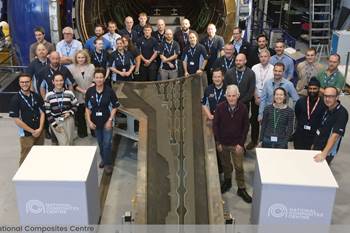Search Results
Showing 1 – 10 of 32 results
Senior polymer engineer at Hyundai Automotive Technical Center Inc. will analyze strategies for balancing objectives in automotive composites design.
An interdisciplinary research team has developed a spatially branched, carbon fiber-reinforced, high load-bearing supporting node for consideration in building and construction.
Biomimicry is an interdisciplinary methodology that can inform composites design and manufacturing via use of more effective and sustainable materials, structural fabrication and technological practices.
Researchers discovered they could fine-tune the biomimetic synthetic material’s energy dissipation upon impact, informing its future potential for aerospace, space and beyond.
Technologies tested in the Filton wind tunnel — many inspired by biomimicry — will include gust sensors, pop-up spoilers and multifunctional trailing edges.
New rotational 3D printing method developed by Harvard researchers allows engineered composites to mimic nature.
Biomimicry evolves into a systematic design process for optimizing efficient, lightweight structures.
The proposed META GLUE takes inspiration from hydrogels, liquid crystal elastomers and mussels’ natural bioadhesives to develop highly architected synthetic systems.
Outlined technology bricks — including foldable wings, more efficient engines and propulsion and composite materials — could support a planned single-aisle next decade, plus Airbus’s renewed commitment of a commercially viable H2 aircraft.
Key structural elements for a 6-meter section of the Airbus biomimetic wing were undertaken by NCC engineering specialists to produce 28 one-off flying parts.









